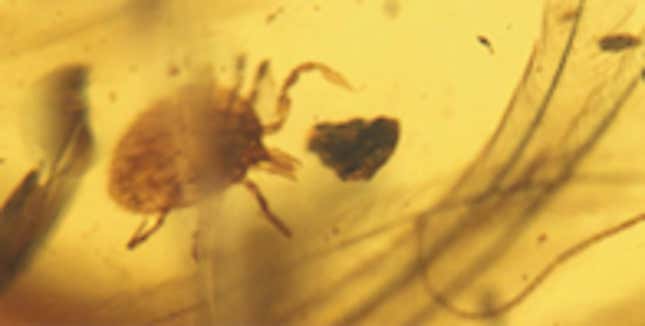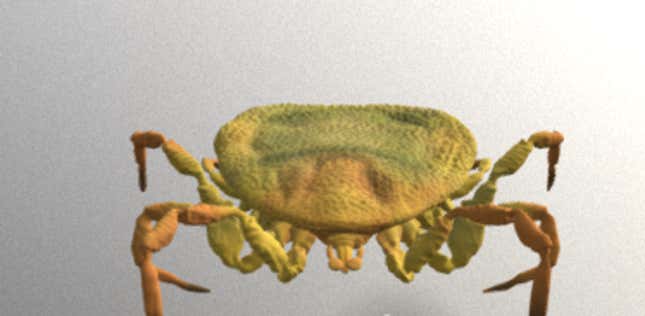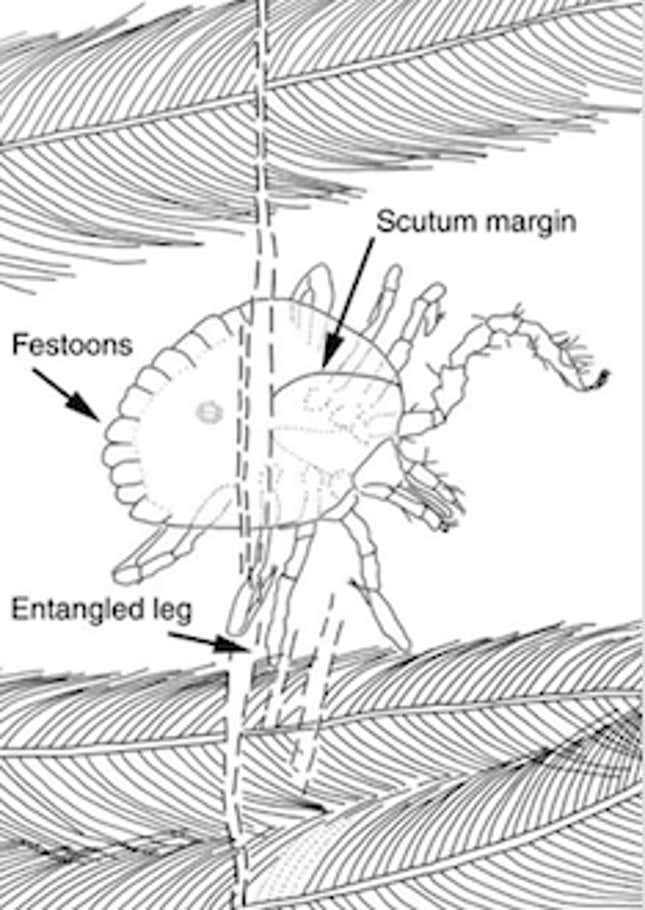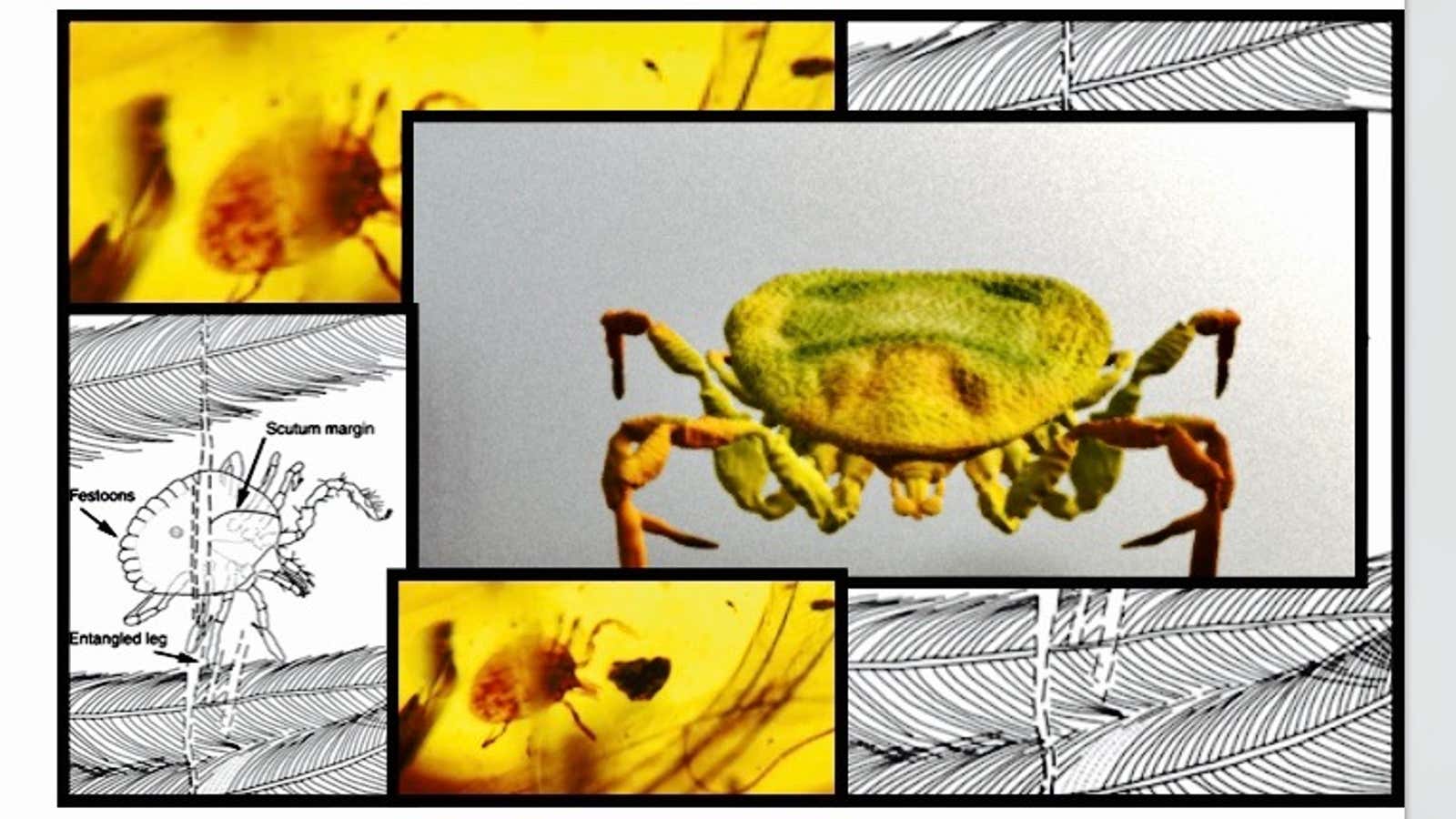Bigger isn’t better when it comes to survival. The mighty dinosaur disappeared long ago while tiny ticks live on, still sucking blood after at least 99 million years.
Until recently, scientists didn’t know much about the pesky tick’s distant history. They didn’t realize, for example, that the bloodsuckers existed during the Jurassic period that lasted from 145 million to 65 million years ago. A study published by researchers from the University of Oxford in Nature Communications on Dec. 12 now shows that nasty little ticks have long lived off the blood of much bigger beasts, specifically feathered dinosaurs that existed 99 million years ago.

“Ticks are infamous blood-sucking, parasitic organisms, having a tremendous impact on the health of humans, livestock, pets, and even wildlife, but until now clear evidence of their role in deep time has been lacking,” says the study’s lead author, Enrique Peñalver of the Spanish Geological Survey, in an Oxford statement about the work.
The researchers found the bloodsuckers preserved in bits of Burmese amber. They named this never-before-seen type of tick after the classic literary vampire, Dracula, with an added twist. The Latin appellation, deinocroton draculi, means Dracula’s terrible tick and is derived from the Greek word deinos, meaning “terrible,” and krotṓn, or “tick.”

The name seems suitable in light of the evidence discovered. For example, one such pest was still engorged with blood when found and blown up to eight times the size of the other like ticks discovered.
Most notably, the researchers were able to confirm that deinocroton draculi parasitized dinosaurs. One was found entangled in a barb at the base of a dinosaur feather, and the two pieces together—tick and feather—illuminate the ancient relationship between ticks and creatures, which persists today.

Dracula’s terrible tick had no eyes, like today’s deer ticks. Little else can yet be said with certainty about this new but extinct species, except that it confirms the longevity of bloodsucking pests from an evolutionary perspective.
The researchers don’t know exactly what kind of dinosaur feather they found but say it is definitely unique to a period in which flying dinosaurs lived and doesn’t belong to a modern bird. “The fossil record tells us that feathers like the one we have studied were already present on a wide range of theropod dinosaurs, a group which included ground-running forms without flying ability, as well as bird-like dinosaurs capable of powered flight,” explains study co-author Ricardo Pérez-de la Fuente, a research fellow at Oxford University Museum of Natural History.
They’re certain, however, that Dracula’s terrible tick was vicious.
